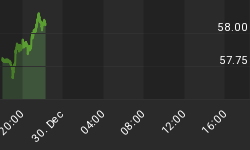Several of our recent articles have described major U.S. equity indices as being in topping patterns. As we mentioned last week, the Nasdaq 100 Index looks as though it needs one more slightly higher high this season to finish the job. Now we see a similar scenario unfolding in the S&P 500 Index , which may reach a marginally higher high this week, to be followed by a week or more of consolidation before another rally. We believe the rallies in the S&P are leading to a reversal high that could appear around late July or early August.
As shown on the monthly chart below, the S&P 500 is not far from important resistance represented by the upper channel of the large Andrews fork. However, price need not reach that high before reversing. Note that the index is currently poised near the top of its 39-month cycle.
As the notes on the monthly chart indicate, we will adjust the channel to fit the high after it is made, and we then will use the harmonic channel lines to identify future support areas.

An additional chart on the weekly timeframe can be seen at our website. It shows how price is responding to a weekly channel and a weekly cycle that is faster than the one shown in the above chart.
The daily chart below shows the approximate path we believe the S&P 500 Index will take for the rest of the summer. This week may see a quick move into channel resistance, perhaps coinciding with Wednesday's FOMC announcement. Following that, we expect about two weeks of consolidation, which will represent wave (iv) in the larger rally that began in February. That consolidation might test the center line of the daily channel, as shown, although it need not dip that low.
After the fourth wave is complete, perhaps around the end of June, price should begin climbing in wave (v), which probably will be the final rally in the larger structure. Based on the weekly cycle mentioned above, we think that rally could persist until late July or early August.

It is important to remember that the potential for upward advancement is very limited now. For traditional investors and anyone with a trading time frame that is longer than a few weeks, this makes any long positions very precarious.
















